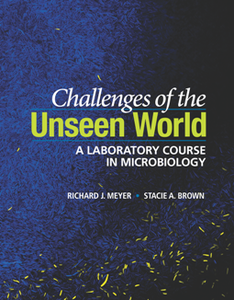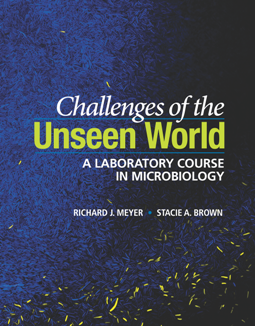Challenges of the Unseen World : A Laboratory Course in Microbiology
by Richard J. Meyer and Stacie A. Brown
English | 2018 | ISBN: 1555819923 | 222 Pages | PDF | 22 MB
by Richard J. Meyer and Stacie A. Brown
English | 2018 | ISBN: 1555819923 | 222 Pages | PDF | 22 MB
Solving real-world health challenges in a learning environment.
You are at an exciting gateway into the world of microorganisms. With nothing more than basic lab equipment such as microscopes, Petri dishes, media, and a handful of reagents, you will learn to isolate, grow, and identify bacteria that live all around us. This is no ordinary microbiology laboratory course; not only will you learn how to streak plates, use a microscope, perform a Gram stain, and prepare serial dilutions and spread plates - fundamental skills found in every microbiologist’s toolkit - you will solve a series of public health–related challenges that many professional microbiologists encounter in their work.
By the end of this course, you will:
Determine the origin of a nosocomial infection. Using foundational and molecular methods, you will determine whether the infections occurring in hospitalized patients are the result of contaminated medical items.
Select the antibiotic to treat a patient with Crohn’s disease. You will find minimum inhibitory concentrations of various antibiotics for a Pseudomonas strain associated with Crohn’s disease.
Pinpoint the source of lettuce contaminated with E. coli. Using molecular tools you will investigate a common food safety challenge, antibiotic-resistant E. coli and the potential for spread of this resistance in the environment.
Find the farm releasing pathogens into a stream used for drinking water. Using bacteriophage load in water samples, you will locate the source of fecal contamination in the water supply of a village in an underdeveloped country.
Evaluate the potential of bacteria to cause a urinary tract infection. You will test for biofilms, quorum sensing behavior, and chemotaxis and assess which disinfectants would be most effective for sanitizing contaminated surfaces.
Microbiology educators and researchers Richard Meyer and Stacie Brown have created this hands-on, engaging introduction to the essential laboratory skills in the microbial sciences that is sure to change the way you view the world around you.



